Create a Cozy Space with DIY Wooden Fireplace Mantels
There's something truly magical about a fireplace, isn't there? It serves as the heart of the home, a gathering spot for family and friends, and a source of warmth during chilly nights. Now, imagine enhancing that charm with a beautiful, handcrafted wooden fireplace mantel. DIY wooden fireplace mantels not only elevate the aesthetic appeal of your living space but also allow you to express your creativity and personal style. Whether you’re a seasoned DIYer or just starting out, creating your own mantel can be a fun and rewarding project.
In this article, we’ll explore the charm and warmth that DIY wooden fireplace mantels can bring to your home. We’ll dive into practical tips for selecting the right materials, design inspirations, and even step-by-step installation guides. So, grab your tools and let’s get started on this exciting journey of transforming your living room into a cozy haven!
When it comes to building a fireplace mantel, the type of wood you choose can make all the difference. Not only does the wood need to be durable and resistant to heat, but it also plays a significant role in the overall look and feel of your mantel. Here are some of the best wood options to consider:
- Oak: Known for its strength and beautiful grain, oak is a popular choice for mantels.
- Pine: A more affordable option, pine offers a light color and can be easily stained or painted.
- Maple: With its fine, consistent grain, maple provides a sleek and modern appearance.
- Walnut: For a luxurious feel, walnut’s rich color and texture can add elegance to any space.
While selecting your wood, consider factors like grain, color, and resistance to heat. Each type of wood has its unique characteristics, so choose one that resonates with your personal style and complements your home decor.
Now that you have your wood selected, it’s time to get inspired! There are countless design styles for wooden fireplace mantels, each with its own unique flair. From the rustic charm of a farmhouse to the sleek lines of modern minimalism, the possibilities are endless. Here are two popular styles to consider:
Rustic mantels evoke a warm and inviting feel, perfect for creating a cozy atmosphere. Think about using materials like reclaimed wood, which adds character and history to your space. You can enhance the rustic appeal with design elements such as:
- Natural finishes: Leave the wood raw or apply a clear coat to showcase its natural beauty.
- Textured accents: Consider adding stone or brick elements to complement the wood.
- Warm colors: Use earthy tones in your decor to enhance the rustic vibe.
Using reclaimed wood for your mantel not only adds a unique aesthetic but also promotes sustainability. You can source reclaimed wood from old barns, pallets, or even furniture. This choice not only gives your mantel a story but also helps reduce waste.
If you want to elevate the rustic charm even further, try applying a distressed finish. Techniques such as sanding, staining, and painting can create a weathered look that adds depth and character. Imagine a mantel that looks like it has been lovingly worn over the years, telling stories of cozy nights spent by the fire.
On the flip side, if your style leans towards modern minimalism, you’ll want to focus on clean lines and simplicity. A modern mantel can serve as a stunning focal point without overwhelming the space. Consider using materials like:
- Painted MDF: For a sleek, uniform look.
- Metal accents: To add a touch of industrial chic.
- Glass elements: To create a light and airy feel.
Once you’ve designed your mantel and gathered your materials, it’s time to install it! This can be a rewarding project, but it’s essential to follow some key steps to ensure a successful installation.
Accurate measurements are crucial for a seamless installation. Measure your fireplace width and height to determine the dimensions of your mantel. Planning is key; visualize how the mantel will look in your space and make adjustments as needed. A well-planned project can save you time and effort!
Properly securing your mantel is vital for safety and stability. Use brackets or anchors to attach the mantel securely to the wall. This ensures that it remains in place, even when adorned with your favorite decor. Remember, safety first!
Q: What type of wood is best for a fireplace mantel?
A: Oak, pine, and maple are excellent choices due to their durability and aesthetic appeal.
Q: Can I use reclaimed wood for my mantel?
A: Absolutely! Reclaimed wood adds character and is an eco-friendly option.
Q: How do I install my DIY mantel?
A: Measure your space accurately, plan the dimensions, and securely anchor the mantel to the wall.
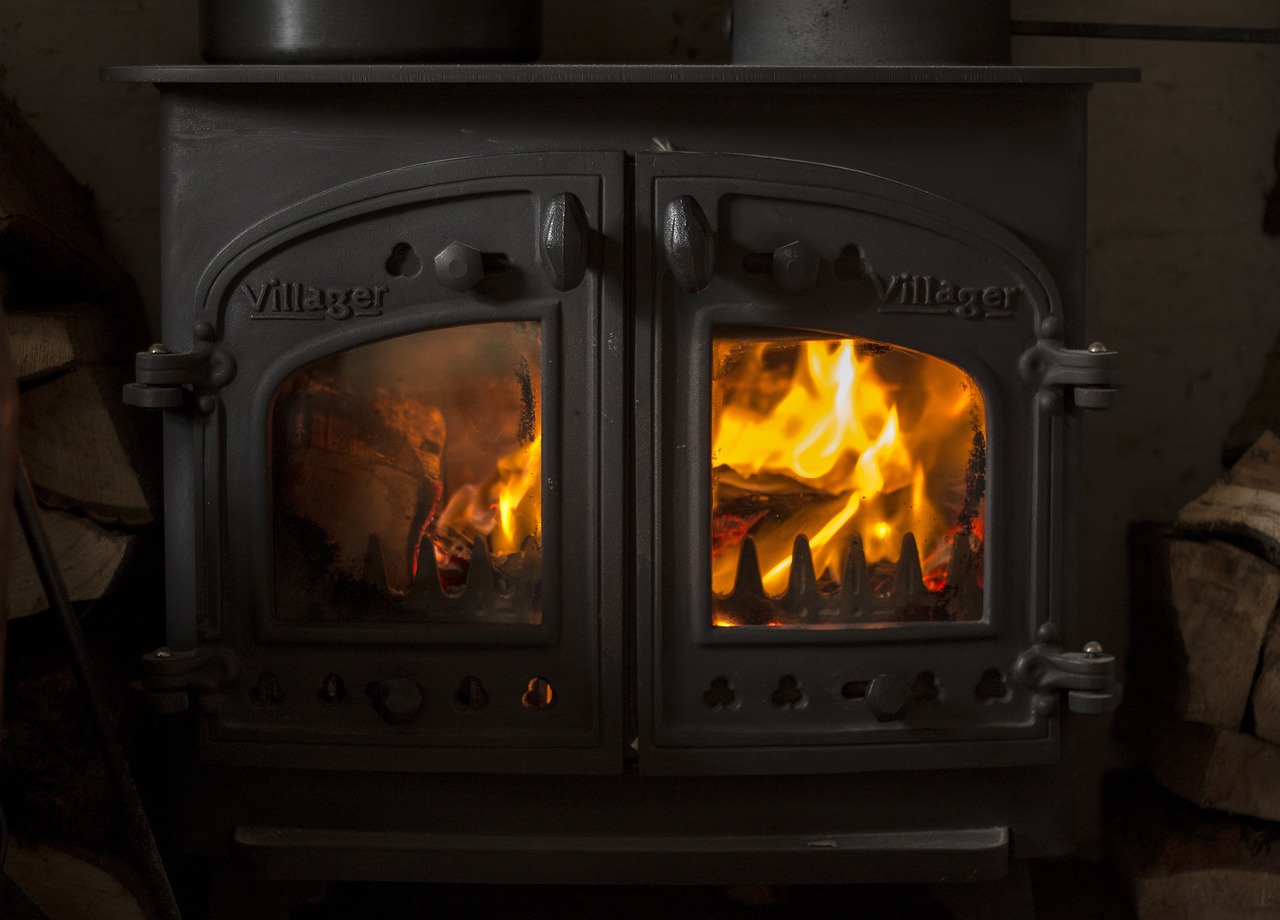
Choosing the Right Wood
When it comes to crafting your own wooden fireplace mantel, the choice of wood is not just a matter of preference; it’s a crucial decision that impacts both the aesthetics and durability of your creation. The right wood can transform your mantel from a simple shelf into a stunning focal point that enhances the overall ambiance of your living space. So, what should you consider when choosing the perfect wood for your DIY project?
First and foremost, you'll want to think about the grain and color of the wood. Different types of wood offer various textures and hues, which can either complement or clash with your existing decor. For example, if you're aiming for a cozy, rustic feel, woods like pine or cedar might be ideal due to their warm tones and natural knots. On the other hand, if your home leans more towards modern minimalism, you might opt for maple or birch, which provide a cleaner, more uniform appearance.
Another important factor to consider is the wood's resistance to heat. Since your mantel will be positioned above a fireplace, it’s essential to choose materials that can withstand high temperatures without warping or cracking. Hardwoods like oak and cherry are excellent choices for their durability and heat resistance. Here’s a quick comparison of some popular wood types:
| Wood Type | Grain | Color | Heat Resistance |
|---|---|---|---|
| Pine | Open grain | Light yellow to brown | Moderate |
| Oak | Closed grain | Light to medium brown | High |
| Cedar | Open grain | Red to brown | Moderate |
| Maple | Closed grain | Light cream to tan | High |
| Cherry | Closed grain | Rich reddish-brown | High |
Beyond just appearance and heat resistance, consider the environmental impact of your wood choice. Sourcing sustainable materials, such as reclaimed wood, not only adds character to your mantel but also supports eco-friendly practices. Reclaimed wood often comes with a history, giving your mantel a unique story and charm that new wood simply can’t match.
In summary, when choosing the right wood for your DIY fireplace mantel, think about the grain, color, heat resistance, and sustainability. Each of these factors plays a significant role in the final look and functionality of your mantel. So, take your time, explore your options, and select a wood that resonates with your style and values. After all, your fireplace mantel isn’t just a shelf; it’s a place where memories are made, stories are shared, and warmth is felt.

Design Inspirations
When it comes to designing your wooden fireplace mantel, the possibilities are as vast as your imagination! Whether you're drawn to the rustic charm of a farmhouse style or the sleek lines of modern minimalism, there's a design that can perfectly complement your home. Imagine walking into a room where the fireplace is the centerpiece, radiating warmth and inviting comfort. The right mantel can transform that vision into reality.
For those who adore the cozy, lived-in feel of rustic designs, consider incorporating elements like reclaimed wood, which carries a story of its own. This type of wood, often sourced from old barns or buildings, adds not only a unique aesthetic but also a sense of sustainability. You can enhance its character with various finishes that highlight the natural grain and imperfections, making each piece truly one-of-a-kind.
Rustic mantels are all about embracing the beauty of nature. Think about using materials such as oak, pine, or cedar, which not only look stunning but are also durable. The warmth of these woods can create an inviting atmosphere in your living space. To amplify the rustic appeal, consider adding design elements like corbels or intricate carvings. These details can turn a simple mantel into a statement piece that draws the eye and sparks conversation.
Using reclaimed wood for your mantel is a fantastic way to add character. Not only does it have a rich history, but it’s also an eco-friendly choice. You can find reclaimed wood at local lumber yards, architectural salvage shops, or even online marketplaces. When selecting your wood, look for pieces that have interesting textures or unique color variations. This will help you create a mantel that stands out. Plus, the imperfections in reclaimed wood can add to its charm, making it feel warm and inviting.
To achieve that coveted rustic look, distressed finishes are a game-changer. There are several techniques you can use to create a weathered appearance. For instance, you might start with a light sanding to remove any smoothness, followed by applying a stain that enhances the wood’s natural beauty. Alternatively, you can use paint and then sand it down in areas to expose the wood underneath. This layered approach not only adds depth to your mantel but also gives it a sense of history and character.
If your heart leans more towards modern aesthetics, then minimalism might be your go-to style. Modern mantels focus on clean lines and simplicity, allowing the beauty of the wood to shine through without overwhelming the space. Consider using hardwoods like maple or walnut, which can be finished to a sleek sheen. The idea here is to create a mantel that feels understated yet elegant. You can even opt for a floating mantel design, which gives the illusion of it hovering above the fireplace, adding a contemporary twist to your living area.
In a modern setting, less is often more. Think about incorporating geometric shapes or a monochromatic color scheme. The beauty of a minimalist mantel is that it can serve as a backdrop for your favorite decorative items, such as a stunning piece of art or a collection of candles. This approach not only highlights your mantel but also allows you to change up your decor seasonally without needing to overhaul the entire space.
Ultimately, the design of your wooden fireplace mantel should reflect your personal style and the overall vibe of your home. Whether you choose the rustic warmth of reclaimed wood or the sleek lines of modern minimalism, your mantel can become a focal point that enhances the beauty and comfort of your living space.
- What type of wood is best for a fireplace mantel?
The best types of wood for a fireplace mantel include oak, pine, cedar, maple, and walnut. Each type offers unique aesthetics and durability. - Can I use reclaimed wood for my mantel?
Yes! Reclaimed wood adds character and sustainability to your mantel, making it a popular choice among homeowners. - How do I achieve a distressed finish?
You can achieve a distressed finish by sanding the wood, applying stain or paint, and then sanding again to expose the wood underneath. - Is it difficult to install a DIY mantel?
With proper measurements and tools, installing a DIY mantel can be a rewarding project. Just be sure to follow safety precautions!
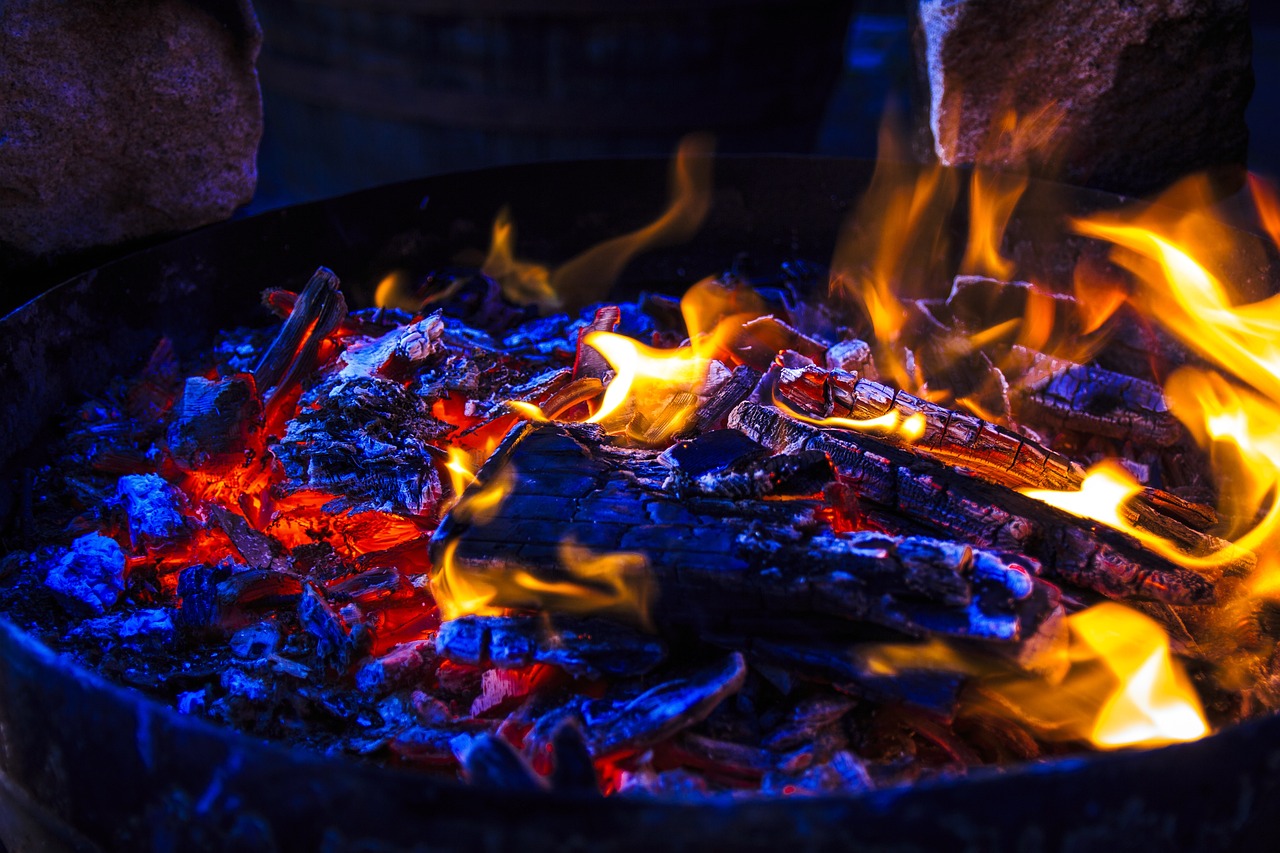
Rustic Charm
When it comes to creating a cozy atmosphere in your home, nothing beats the of a wooden fireplace mantel. Picture this: a crackling fire, the soft glow of flickering flames, and a mantel that exudes warmth and character. It's like wrapping yourself in a warm blanket on a chilly evening! Rustic mantels are all about embracing the beauty of nature, showcasing the raw, organic elements of wood. They invite you to kick off your shoes, grab a cup of hot cocoa, and settle in for a night of relaxation.
To achieve this inviting look, you can choose from a variety of materials and finishes that enhance the rustic appeal of your fireplace. Think about the grain patterns and color tones that resonate with you. For instance, oak and pine are popular choices, known for their durability and beautiful textures. Imagine the rich, deep hues of walnut or the light, airy feel of reclaimed barn wood. Each piece tells a story, adding depth to your home.
Additionally, consider incorporating natural elements such as live edges, which maintain the wood's original shape and features. This technique not only enhances the rustic vibe but also makes each mantel a unique work of art. You might also want to explore different finishes that can elevate the rustic look. A matte finish can create a more subdued, earthy feel, while a glossy finish can add a touch of elegance. The choice is yours!
Don't forget about the decorative accents that can complement your rustic mantel. A few well-placed items can transform your mantel into a focal point. Here are some ideas to consider:
- Vintage Lanterns: Add a couple of vintage lanterns for a soft glow that enhances the rustic charm.
- Natural Elements: Incorporate pinecones, branches, or even a small potted plant to bring the outdoors in.
- Seasonal Decor: Change up your decorations with the seasons—think pumpkins in the fall, evergreen branches in winter, and fresh flowers in spring.
Creating a rustic mantel isn't just about the materials; it's also about the design elements that enhance its appeal. Consider adding brackets or corbels to give your mantel a more architectural feel. These can be made from the same wood as your mantel or even a contrasting material for added interest. The key is to let your creativity shine and make choices that reflect your personal style.
In summary, a rustic fireplace mantel is more than just a shelf above your fireplace; it's a canvas for your creativity and a source of warmth and comfort in your home. So, roll up your sleeves, gather your materials, and let the rustic charm of wood transform your living space into a cozy retreat.
Q: What type of wood is best for a rustic fireplace mantel?
A: Popular choices include oak, pine, and reclaimed wood. Each offers unique textures and colors that enhance the rustic appeal.
Q: How can I achieve a distressed look for my mantel?
A: Techniques include sanding, staining, and using paint to create a weathered effect. Experiment with different methods to find the look you love!
Q: Can I install a rustic mantel myself?
A: Absolutely! With the right tools and instructions, DIY installation can be a rewarding project. Just be sure to measure accurately and secure it properly.

Reclaimed Wood Options
When it comes to creating a cozy and inviting atmosphere in your home, using reclaimed wood for your fireplace mantel is an excellent choice. Not only does reclaimed wood add a unique character that new wood simply can't replicate, but it also promotes sustainability by giving old materials a new lease on life. Imagine the stories behind each piece of wood, the history it carries, and the warmth it brings to your living space. By choosing reclaimed wood, you're not just making a design choice; you're making an eco-friendly statement.
So, where can you find reclaimed wood? There are several sources to consider:
- Salvage Yards: These are treasure troves of old wood from demolished buildings, barns, and other structures. You can often find beams, planks, and even decorative elements that are perfect for your mantel.
- Online Marketplaces: Websites like Craigslist, Etsy, or specialized reclaimed wood suppliers offer a variety of options. Just be sure to check for quality and authenticity.
- Local Woodworkers: Many artisans specialize in reclaimed wood projects. They can provide not only the wood but also custom design services to create a mantel that perfectly fits your style.
Incorporating reclaimed wood into your fireplace mantel design has numerous benefits. First, it contributes to a rustic aesthetic that can enhance the overall charm of your space. Second, reclaimed wood is often more durable than new wood, as it has already been seasoned over the years. Finally, using reclaimed materials can sometimes save you money, especially if you source them locally. However, it’s essential to inspect the wood for any signs of damage, pests, or rot before committing to a purchase.
Another aspect to consider is the finish of the reclaimed wood. You can choose to leave it in its natural state, showcasing the beautiful imperfections and unique grain patterns, or you can opt for a finish that complements your home’s decor. Whether you prefer a matte look or a glossy sheen, the finish can significantly affect the final appearance of your mantel. Just remember, the right finish not only enhances the wood’s beauty but also protects it from wear and tear.
In summary, reclaimed wood options for your fireplace mantel offer a fantastic way to blend style with sustainability. By sourcing unique pieces and thoughtfully considering their finish, you can create a stunning focal point in your home that tells a story and invites warmth into your space.
Q: What types of reclaimed wood are best for fireplace mantels?
A: Popular choices include barn wood, old growth timber, and salvaged beams. Each type has its own unique characteristics and history.
Q: How do I ensure the reclaimed wood is safe to use?
A: Inspect the wood for signs of pests, mold, or rot. It's also advisable to treat the wood with a sealant to prevent any potential issues.
Q: Can I stain reclaimed wood?
A: Yes, you can stain reclaimed wood. However, it's essential to test the stain on a small area first, as reclaimed wood can absorb color differently than new wood.
Q: Is reclaimed wood more expensive than new wood?
A: It can vary. While some reclaimed wood can be pricier due to its unique qualities, sourcing locally or purchasing from salvage yards can often yield more affordable options.
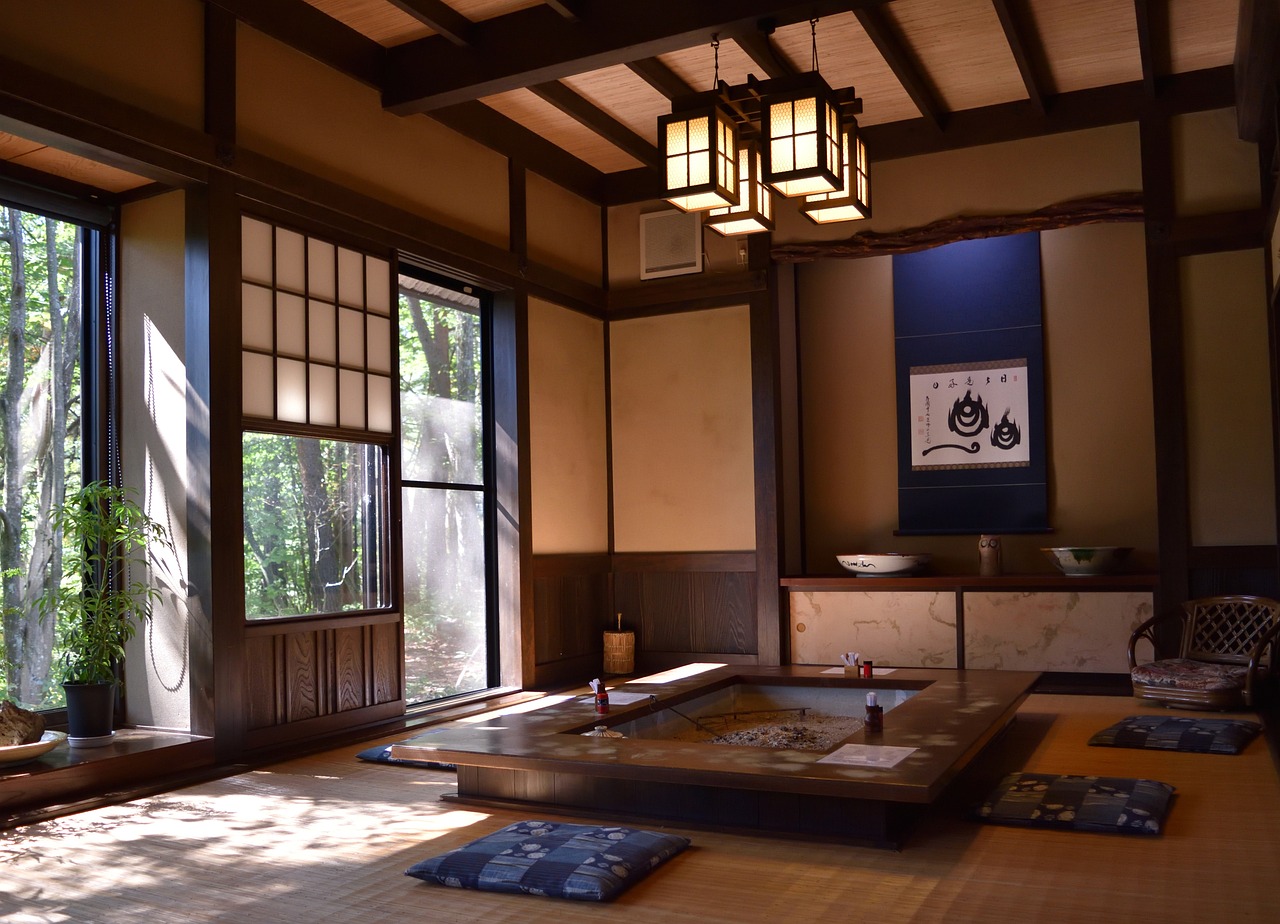
Distressed Finishes
When it comes to creating a cozy and inviting atmosphere around your fireplace, can make all the difference. Imagine walking into a room where the mantel tells a story, where each scratch and imperfection adds to its character. Achieving that weathered look is not only about aesthetics; it’s about creating a sense of warmth and nostalgia that can transform your living space. But how do you get that perfect distressed finish? Let’s dive into some techniques that will help you master this art.
One popular method for achieving a distressed finish is through sanding. Start with a coarse grit sandpaper to remove any existing finish and to create a rough texture. Once you’ve achieved the desired level of distress, switch to a finer grit to smooth out the surface. This process not only gives your mantel a rustic charm but also allows the natural beauty of the wood grain to shine through. After sanding, consider applying a stain to enhance the wood's color while still allowing the distressed areas to show their character. A rich walnut or a warm oak stain can elevate the rustic appeal, making your mantel a stunning focal point.
Another technique involves painting your mantel before distressing it. Choose a color that complements your room’s decor—perhaps a soft white or a muted gray. After applying a couple of coats of paint, you can use sandpaper or a sanding block to gently rub away areas of the paint, especially at the edges and corners. This technique mimics the natural wear and tear that occurs over time, giving your mantel a beautifully aged look right from the start. If you want to add more depth, consider layering different paint colors. Start with a base coat and then apply a top coat in a contrasting color, distressing it in the same manner to reveal the color underneath.
For those who love a bit of flair, wax or glaze can be used after your painting and sanding processes. Applying a wax finish can add a subtle sheen and protect your mantel from wear. A glaze can enhance the depth of color, making the distressed areas pop even more. Simply apply the wax or glaze with a cloth, making sure to follow the wood grain for a smooth finish. The end result is a mantel that feels both modern and timeless, perfect for any home.
Lastly, don’t forget about the power of natural elements. Incorporating wood knots, cracks, or even small branches into your design can enhance the distressed look. These natural imperfections tell a story of their own and can make your mantel a true conversation piece. Remember, the goal is to create a piece that feels authentic and personal. So, gather your tools, unleash your creativity, and let your mantel reflect your unique style!
- What type of wood is best for a distressed finish?
Softwoods like pine or fir are great choices as they are easier to sand and distress. However, hardwoods can also be used if you prefer a more durable option. - Can I distress a pre-finished mantel?
Yes, but it’s important to sand down the existing finish first to ensure that the new paint or stain adheres properly. - How long does it take to achieve a distressed finish?
The time varies depending on the techniques used, but you can typically complete the process in a few hours to a day, allowing for drying time between steps.
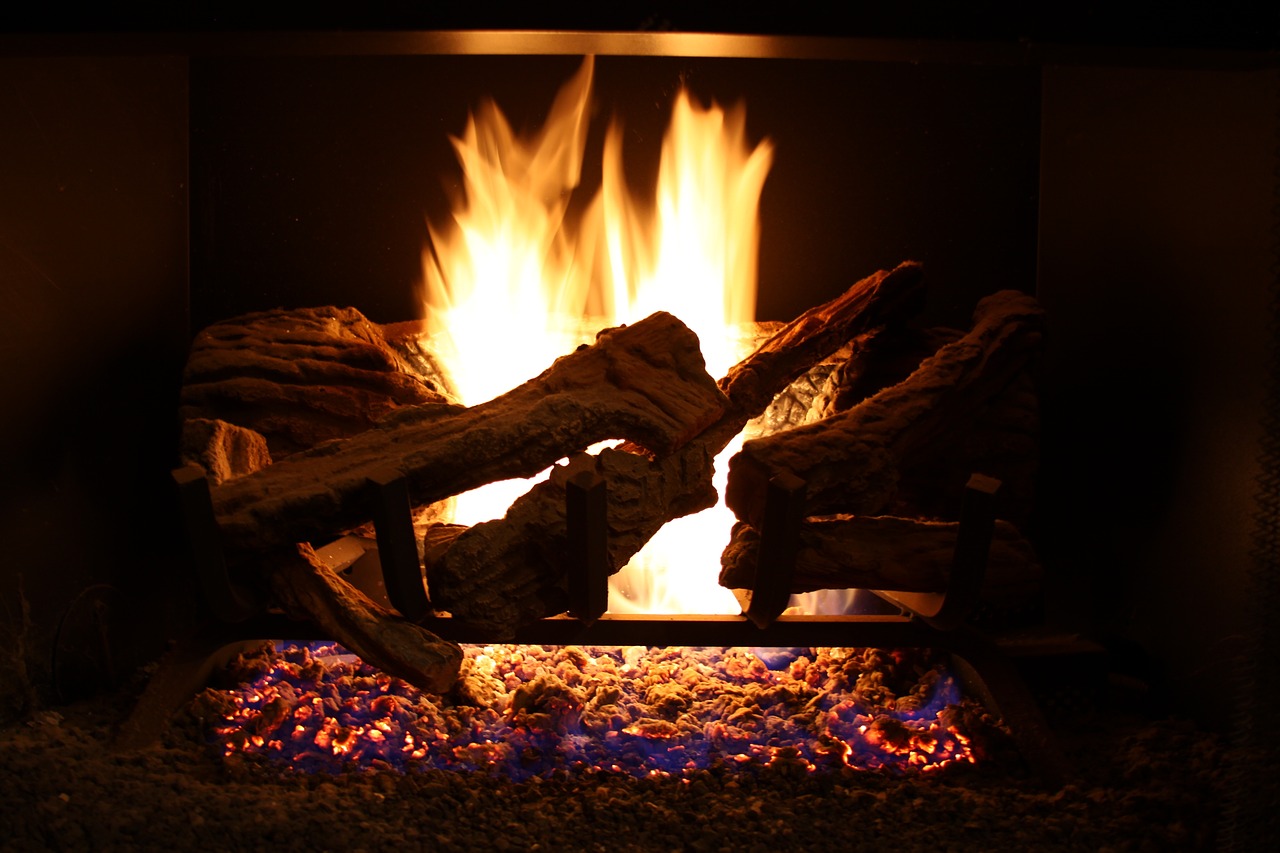
Modern Minimalism
When it comes to creating a cozy yet stylish space, offers a refreshing approach that emphasizes simplicity and functionality. Imagine a fireplace mantel that doesn’t just serve as a decorative piece but also enhances the overall aesthetic of your room. This design philosophy focuses on clean lines, neutral colors, and an uncluttered look, allowing your mantel to become a statement piece without overwhelming the space.
In modern minimalism, less is truly more. The idea is to strip away unnecessary embellishments and focus on what really matters: the quality and beauty of the materials used. For instance, selecting a mantel made from solid wood with a smooth finish can create a striking contrast against a sleek wall. Consider using woods like maple or birch, which not only provide durability but also offer a subtle elegance that aligns perfectly with minimalist design principles.
One of the key elements of a modern minimalist mantel is its color palette. Neutral tones such as whites, grays, or soft browns are often favored, as they can seamlessly integrate into any room. However, don’t shy away from bold accents! A single, striking piece of art or a unique sculpture placed on your mantel can serve as a focal point that draws the eye without cluttering the space. This balance between simplicity and statement is what makes modern minimalism so appealing.
When designing your mantel, think about the materials you wish to incorporate. While wood is a popular choice, consider mixing it with other elements like metal or glass. A wooden mantel with sleek metal brackets can create a stunning juxtaposition that embodies the minimalist ethos. Additionally, using glass shelves can keep the visual weight light, allowing your mantel to feel open and airy.
To further enhance the minimalist feel, focus on functional decor. Instead of filling your mantel with numerous decorative items, choose a few key pieces that serve a purpose. For example, a simple clock or a set of candles can provide both beauty and functionality. Remember, the goal is to create a space that feels organized and intentional, where each item has a reason for being there.
Finally, consider the lighting around your mantel. Soft, ambient lighting can elevate the minimalist design, creating a warm and inviting atmosphere. Wall sconces or recessed lighting can highlight your mantel without overshadowing its simplicity. The right lighting can transform your space, making it feel cozy and welcoming, perfect for those chilly evenings spent by the fire.
In summary, embracing modern minimalism for your fireplace mantel means prioritizing quality over quantity. By selecting the right materials, focusing on a neutral color palette, and incorporating functional decor, you can create a stunning focal point in your home that embodies the essence of minimalist design. So, are you ready to transform your space into a serene sanctuary with a modern minimalist mantel?
- What type of wood is best for a modern minimalist mantel?
Hardwoods like maple, birch, and oak are excellent choices due to their durability and clean appearance.
- Can I mix materials in my mantel design?
Absolutely! Mixing wood with metal or glass can enhance the modern minimalist aesthetic.
- How do I choose decor for a minimalist mantel?
Opt for a few functional pieces that complement the space, such as candles or a small clock, rather than overcrowding with decorations.
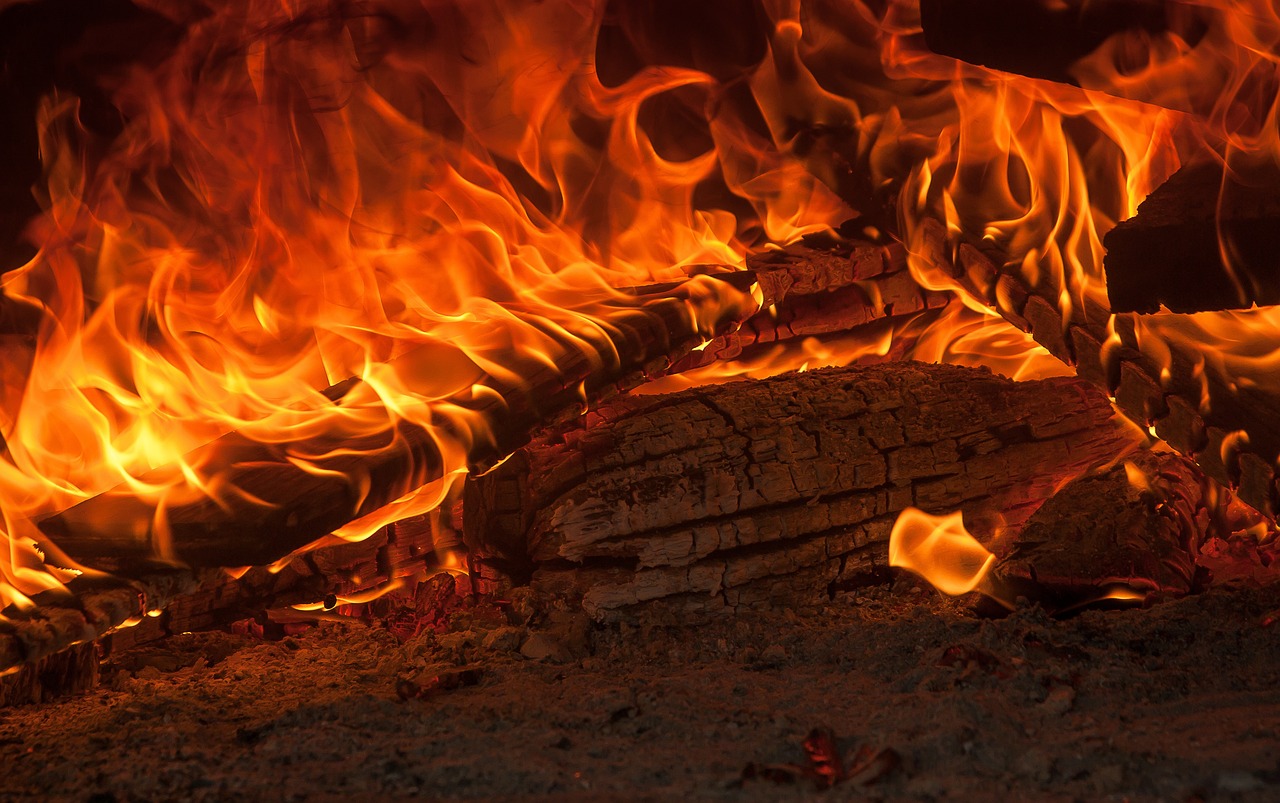
DIY Installation Tips
Installing your own wooden fireplace mantel can be an incredibly rewarding experience. Not only do you get to showcase your creativity, but you also enhance the charm of your living space. Before diving into the installation process, it’s essential to gather the right tools and materials. You’ll need a few basic items including a level, a stud finder, screws, and brackets. Having these tools on hand will streamline the process and reduce any potential frustrations.
Before you even think about hammering in a nail, accurate measurements are crucial. Start by measuring the width of your fireplace and the wall above it. This will help you determine the dimensions of your mantel. Ideally, you want the mantel to extend a few inches beyond the edges of the fireplace for a balanced look. Don’t forget to consider the height as well; a mantel that’s too high or too low can throw off the entire aesthetic. Once you have your measurements, sketch a simple plan to visualize how everything will fit together.
Next, you’ll want to focus on securing the mantel properly. This is where safety meets style. A mantel that’s not anchored correctly can pose a hazard, especially in homes with children or pets. Use a stud finder to locate the wall studs, as these are your best bet for securing the mantel. You can use brackets to attach the mantel to the wall, ensuring it can hold the weight of any decorative items you plan to display. Remember, it’s better to over-engineer the support than to risk a wobbly mantel.
After securing the mantel, take a step back and admire your work. It’s important to allow yourself a moment to appreciate the transformation you've made in your space. You can also personalize it by adding decorative elements like candles, family photos, or seasonal decor. This is where your unique style can shine through, making the mantel a focal point in your home.
In case you encounter any issues during the installation, here’s a quick reference table for troubleshooting common problems:
| Problem | Solution |
|---|---|
| Uneven Surface | Use shims to level the mantel before securing it. |
| Not Enough Support | Reassess the placement of brackets and ensure they are anchored into studs. |
| Too High or Low | Consider adjusting the height before finalizing the installation. |
With these tips in mind, you’re well on your way to creating a stunning focal point in your home. Remember, the key to a successful DIY project is patience and attention to detail. Enjoy the process and take pride in your craftsmanship!
Q: What type of wood is best for a fireplace mantel?
A: Hardwoods like oak, maple, or cherry are great options as they are durable and can withstand heat better than softwoods.
Q: How can I ensure my mantel is safe for use?
A: Always secure your mantel to wall studs and avoid placing flammable items directly on or near it.
Q: Can I paint or stain my mantel?
A: Absolutely! Painting or staining can enhance the look of your mantel and help it fit seamlessly into your decor.
Q: How much weight can a wooden mantel hold?
A: This depends on the installation and the type of wood used, but properly secured mantels can generally hold several pounds without issue.
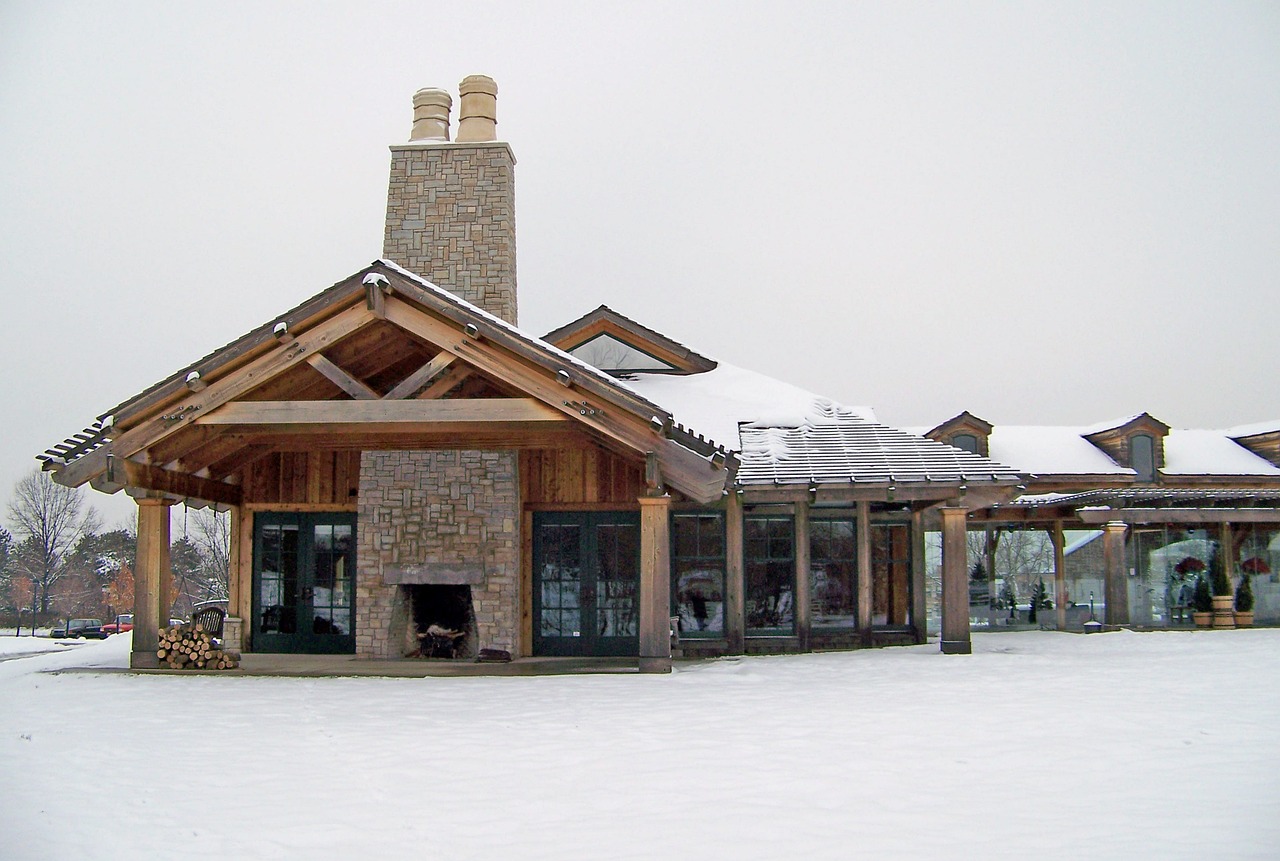
Measuring and Planning
When it comes to creating your own DIY wooden fireplace mantel, are the cornerstones of a successful project. Imagine setting out on a road trip without a map; you'd likely end up lost or frustrated, right? The same principle applies here. To avoid any mishaps, you need to gather your tools and get your measurements just right. Start by determining the location of your fireplace and the wall space surrounding it. This will give you a clear idea of how large or small your mantel should be.
First, grab a measuring tape and jot down the width of your fireplace. You want your mantel to extend beyond the edges of the fireplace for that balanced look. A general rule of thumb is to extend the mantel about 6 to 12 inches on either side. Next, measure the height from the floor to where you want the bottom of your mantel to sit. Typically, the bottom of the mantel should be around 54 inches from the floor, but this can vary based on personal preference and the height of your ceilings.
Once you have these measurements, it's time to plan the dimensions of your mantel. Consider factors such as the thickness of the wood you plan to use. A thicker mantel will not only provide a more substantial look but will also be more durable. For example, a mantel that is 1.5 to 2 inches thick is generally a good choice. You might want to sketch out your design on paper, visualizing how it will fit with your existing decor. This is where you can play around with different styles and shapes, from simple rectangular designs to more elaborate, curved edges.
Here's a quick table to help you visualize the ideal dimensions:
| Measurement | Recommended Size |
|---|---|
| Width | 6-12 inches beyond the fireplace |
| Height from Floor | 54 inches (adjust as needed) |
| Thickness | 1.5 - 2 inches |
After you've nailed down the dimensions, it's crucial to think about the style and finish of your mantel. Will it be stained, painted, or left natural? The finish will greatly impact the overall look of your space. Be sure to consider the existing color palette of your room to ensure a cohesive design. Once you have a solid plan in place, you can confidently move on to the next steps of construction and installation.
- What tools do I need for measuring and planning? A measuring tape, pencil, level, and possibly a square will help ensure accurate measurements.
- How do I decide on the right size for my mantel? Consider the size of your fireplace and the overall proportions of your room. A mantel should complement, not overwhelm.
- Can I modify the dimensions later? Yes, but it’s best to plan carefully upfront to avoid unnecessary adjustments later on.

Securing the Mantel
When it comes to securing your DIY wooden fireplace mantel, safety and stability should be your top priorities. After all, the last thing you want is for your beautifully crafted mantel to come crashing down! To ensure your mantel is both safe and secure, there are several methods you can employ, depending on the weight of the wood and the type of wall you’re working with. First, let’s consider the materials you’ll need.
You'll want to gather a few essential tools and materials before starting the installation process. Here’s a quick rundown:
- Stud finder
- Level
- Drill and drill bits
- Wood screws (appropriate for your wall type)
- Brackets or mounting hardware
Now, let’s dive into the different methods for securing your mantel:
1. Using Wall Studs: The most reliable way to secure your mantel is by anchoring it directly into wall studs. A stud finder will help you locate these sturdy beams behind your drywall. Once you've identified the studs, mark their locations and ensure your mantel will align with them. Drill pilot holes into the mantel and secure it with wood screws. This method provides excellent support and stability.
2. Brackets for Extra Support: If you're feeling a bit unsure about the weight distribution, consider using brackets. These can be mounted on the wall and will support the mantel from below. Select brackets that complement your mantel's design—while they should be functional, they can also add an aesthetic touch!
3. Wall Anchors: For those who may not have access to wall studs, wall anchors are a great alternative. They provide additional support and are especially useful for drywall installations. Make sure to choose the right type of anchor based on the weight of your mantel and follow the manufacturer's instructions for installation.
Before you finalize the installation, it’s crucial to double-check your work. Use a level to ensure the mantel is straight, and give it a gentle shake to test its stability. If everything feels secure, congratulations! You've successfully installed your DIY wooden fireplace mantel.
In summary, securing your mantel properly is key to enjoying its beauty without worry. By using wall studs, brackets, or wall anchors, you can create a safe and stylish focal point in your living space.
Here are some common questions that people often have when it comes to securing their wooden fireplace mantels:
- How much weight can a wooden mantel hold? - The weight capacity depends on the type of wood and the method of installation. Generally, a well-secured mantel can hold several pounds, but it’s always best to check specific weight limits.
- Can I install a mantel on drywall alone? - While it's possible, it's not recommended. Always try to anchor your mantel into wall studs or use wall anchors to ensure stability.
- What tools do I need for installation? - Basic tools include a stud finder, level, drill, wood screws, and brackets if you choose to use them.
Frequently Asked Questions
- What type of wood is best for a DIY fireplace mantel?
When it comes to choosing the right wood for your DIY fireplace mantel, you want to consider both aesthetics and durability. Popular choices include oak, maple, and pine. Oak offers a beautiful grain and is quite sturdy, while pine is more affordable and easy to work with. Maple, on the other hand, has a smooth finish that can elevate the look of your mantel. Always ensure that the wood you choose can withstand heat and is suitable for your design preferences.
- How can I achieve a rustic look for my mantel?
To create that charming rustic look, consider using reclaimed wood, which adds character and history to your space. You can also apply distressed finishes by sanding down the edges and applying a weathered stain. Techniques like dry brushing or using a paint wash can enhance the rustic appeal, giving your mantel a unique and inviting feel that complements any cozy room.
- What are some modern design ideas for fireplace mantels?
If modern minimalism is more your style, focus on clean lines and simple shapes. Use materials like sleek wood or even metal for a contemporary look. Consider floating mantels that appear to hover, or opt for a mantel with a simple shelf that can be styled with minimal decor. The key is to keep it uncluttered while ensuring it fits seamlessly into your overall home aesthetic.
- What tools do I need for installing my DIY mantel?
For a successful installation, you'll need a few essential tools: a measuring tape, level, drill, screws, and a stud finder. A saw may be necessary for cutting your wood to the desired length. Additionally, safety gear like goggles and gloves is important to protect yourself while working. Having the right tools will make the process smoother and help ensure a secure and stable mantel.
- How do I measure for the perfect fit?
Accurate measurements are crucial for a seamless installation. Start by measuring the width of your fireplace to determine how wide your mantel should be. Then, decide on the height—typically, mantels are placed about 54 inches above the floor, but this can vary based on personal preference and room height. Always double-check your measurements before cutting to avoid any mistakes!
- What methods can I use to secure my mantel to the wall?
Securing your mantel properly is vital for safety. You can anchor it using brackets that attach to the wall studs, or you might opt for a cleat system that allows for a flush mount. Make sure to use appropriate screws and anchors for the weight of the mantel. Following these methods will ensure that your mantel stays securely in place, so you can enjoy it worry-free!



















